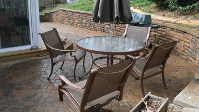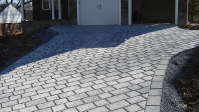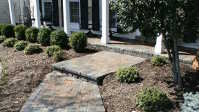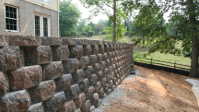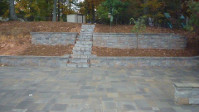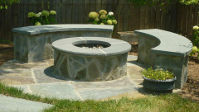When retaining walls in McLean start having problems – also known as “failures” – they must be taken care of right away. Small problems usually can be fixed, before they become big problems. Of course, some problems can be prevented with some forethought and care.
There are generally 3 different types of failures: frost-heave failures, wet soil failures, and blowout failures.
In frost-heave failures, the retaining wall was built without proper drainage or a footer. When the wet soil freezes, it can heave upward and severely damage the wall. The ways to avoid frost-heave failures begin during construction. The wall should rest on gravel (which allows for proper drainage) and the base or footer should be buried under the frost line.
Wet soil failures are also caused by drainage issues, causing the soil in the wall to become saturated. The hydrostatic water pressure and weight of the wet soil can cause the retaining wall to collapse. To prevent wet soil failures, gravel should be used to funnel the water away from the wall. Care should be taken that topsoil is only used in the top 6” behind the retaining wall.
When a retaining wall has a blowout, it’s because a load of weight is added within 3 feet of the top of the retaining wall. This causes the top of the retaining wall to start leaning, until it tips over. If you are expecting to drive near or put a shed or something else heavy near your retaining wall, tell your landscape engineer before wall construction begins. They can increase the size of the footer to manage the load, and increase the number of tiebacks to provide additional support.
Want properly constructed retaining walls for your home in McLean – the kind of retaining walls that last for generations? Contact the retaining wall experts at Premier Paving & Planting.

